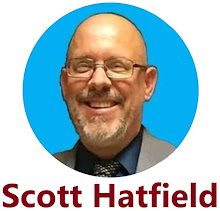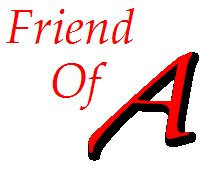In the sport of cricket, if a batsman scores a hundred or more runs in a single match, it's called a 'century' and it's definitely a noteworthy feat....but hardly stop-the-presses, earth-shaking stuff. For you non-cricketers, and in comparison to baseball, centuries are less common than a two-homer game, but occur more frequently than a no-hitter. In fact, since people cared to keep such things, which is to say in the last century or so, there’s been at least 25 batsmen who have achieved this feat one hundred or more times....which you might described as a ‘century of centuries.’ Of these many great batsman, one (the great Donald Bradman of Australia) did it half the time he batted: 117 centuries in 234 recorded matches, including 29 Test matches at the highest level. As you might imagine, his average batting total of 95.14 runs per match is pretty tough to beat.
Now, I’ve never had a ‘century’ in the few seasons I tried my hand at cricket, and would’ve been foolish to imagine that I ever would’ve achieved it, at any level. There are a lot of reasons for that: for one thing, I’m an American. It’s not our national game, and I never even saw it played until I was in college. For another thing, I’m as blind as a bat, 20/200 in one eye. For a third, despite having some decent speed and a rubber arm that never really got sore, I just wasn’t a natural athlete, though Lord knows I tried my hand at ball games of all sorts as often as I could. I love baseball, especially the fielding aspect. I could never hit much, but I will cheerfully shag flies for an hour in triple-digit heat if anyone would be willing to hit them to me. If it was just a question of desire, I would certainly have a few more moments of athletic glory for my mental scrapbook.
Alas. I think the most runs I ever scored in a cricket match was six in a half-dozen overs, and it was sheer luck. I took a goose egg almost every other time I even got a chance to bat, often on the first or second pitch. When you consider that in limited-overs cricket the tail end of the “lineup” may never get to bat, that makes it sting only a little bit less. Imagine: you wait hours for your chance to join the mad dogs out on the green, suit up in the unfamiliar (and ill-fitting pads), waddle out to the pitch, and on the first delivery helplessly watch some height-challenged Sri Lankan spin the ball under your bat. K-chack! (That’s the sound of the stumps being sliced off by the delivery).
And, since I mostly got to bat in road games, the inevitable mock pleasantry: “Thanks for coming!” Which, half the time, really meant something like this: “Foolish American. This is our game. You don’t belong here. Go play one of your American games and stop wasting our time.”
So, no century for me, ever, for this aging and flabby American. But I also wonder: will I ever achieve something really, really great? A half-century has gone by for me: I have a chance to pursue another half of a century, but the actuarial tables are pretty clear that the odds are not in my favor. I’m welcome to pursue it if I like, by hook or crook, grasping for more years as I can, but in all likelihood I will not make another five decades. Cliche alert: the shuffling of the mortal coil is not only inevitable, it’s getting closer, and as I begin my second half-century (one hopes) of life, I also have to wonder: where is my “century” of excellence, my noteworthy feat? If I have something like that in me, what is it, and how should I go about pursuing it?
There can be doubt about my brother, Charles Hatfield, or my father, Jerry Hatfield. Both individuals are published authors and, if you ask the right sort of people, authoritative where their personal interests are concerned. To those in the know, they are bona-fide experts. How so? Let me count the ways, starting with my father.
Dad’s a retired Air Force officer, but his first love has always been motorcycles and their history, particularly the storied Indian marque. He has published 14 books on motorcycling, which have ranged from broad surveys of racing history, archival accounts of major firms, guides to buying and restoring vintage bikes, even “coffee-table” photo albums.
Most of these books, including the albums, have included many photographs that Dad shot himself, largely in 35mm color film, and in most of his books Dad has been heavily involved in the reproduction, enlargement and placement of vintage negatives (often from large-format cameras that are largely extinct). For books like this, it’s not just about the writing, but about the production and design. I dare say there is no author on the planet who can speak with more authority on what it takes to produce such books.
Dad’s last two books are especially worthy of admiration in terms of the energy and research they required, but they differ wildly in character and scope. His Standard Catalog of American Motorcycles (2006) is, its subtitle asserts, the “only book to fully chronicle every bike ever built” in this country prior to the 1990's, with over 1,200 illustrations. It is a “just-the-facts-ma’am” kind of book that only specialists can produce, a broad survey of hundreds of different manufacturers and thousands of models. It will no doubt serve as the standard reference on this topic for years to come.
Dad’s last book, Flat Out! (2007), has a tighter focus and very different tone, filled with colorful anecdote and commentary about the past community of daredevils who tuned, built, raced and attempted to break records with motorcycles. It is an in-depth history of the career of iconic motorcyclist Rollie Free, a labor of love that took a decade to get into print due to the research involved and the significant negotiations required to gain access to critical materials. Eventually, it became clear that to produce a book worthy of the topic, Dad would have to self-publish. The result is a tour-de-force of design and production that sold out within a year. Today, used copies of the Flat Out! are offered on Amazon at over $175.00, which is to say more than a hundred dollars more than the original list price.
Long before Dad’s last book appeared, vintage cycling enthusiasts came to regard him as an eminence. As a result, Dad has been a keynote speaker at many gatherings of such folk, and has (on other people’s dimes) traveled all over the United States, Australia and New Zealand sharing his enthusiasm for antique motorcycles and their history, and he has appeared as a bona-fide expert on television programs on cable and public television, and in 2008 was interviewed by collector Jay Leno, who maintains a world-famous collection of classic cars and bikes. Leno, who apparently has some other gig that makes him well-known, also wrote the introduction to Dad’s last book.
Are these last two works my Dad’s ‘century’? Only he could really answer that, and assess the significance of his work to a larger audience. But there can be doubt that, when it comes to producing an original body of work in an authoritative manner, my father has set the bar pretty high. With the possible exception of Floyd Clymer, there hasn’t been any American in the last century who can top either the size, diversity or quality of Dad’s books on motorcycling. I kind of hope he has another book in him, especially since (being in his seventies) he no longer has as many opportunities to actually ride bikes that are older than he is. In my next post, I’ll describe some of my brother’s achievements and try to grapple with the notion that, as accomplished as he is, that he somehow thinks I deserve some credit for his success.
Word Count: 1,347
Total: 3,218





No comments:
Post a Comment